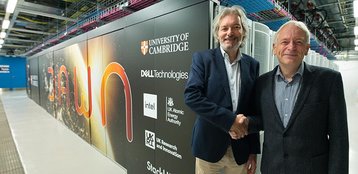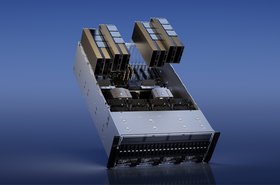The UK’s fastest AI supercomputer Dawn has become operational, being used by scientists involved in research fields including fusion energy, healthcare, and climate modeling.
Located at the University of Cambridge’s Open Zettascale Lab, the system was first announced by the British government in November 2023 and is the result of a two-year collaboration between Dell and Intel.
The Dawn supercomputer contains 512 4th Generation Intel Xeon Scalable processors and 1,024 Intel Data Center GPU Max 1550 accelerators on 256 Dell PowerEdge XE9640 server nodes, offering up to 128 gigabytes of high bandwidth memory.
The Dell PowerEdge servers will use direct liquid cooling.
The cluster is set to be launched in two phases, with Dawn Phase 1 now in operation with 19 petaflops of FP64 performance. The second phase is due to launch later in 2024, and although its exact performance has not been confirmed, previous statements have claimed the Phase 2 system will have a ten-fold increase in performance.
“The Phase 1 system plays an important role within a larger context, where this co-design activity is hoped to continue, aiming to deliver a Phase 2 supercomputer in 2024 which will boast 10 times the level of performance. If taken forward, Dawn Phase 2 would significantly boost the UK AI capability and continue this successful industry partnership,” said Dr. Paul Calleja, director of Research Computing Services at the University of Cambridge.
Dawn will eventually connect with the Isambard-AI cluster at the University of Bristol’s National Composites Centre. Delivered by HPE, Isambard-AI is a Cray EX-based system, which will feature 5,448 Nvidia GH200 Superchips and offer 200 petaflops Linpack and 21 exaflops of AI compute.
Phase one of the £225 million ($273m) system will be available next month.
Accelerating research into nuclear fusion
One project Dawn is currently involved with is nuclear fusion research.
In June 2023, the UK Atomic Energy Authority (UKAEA) and Cambridge University announced that they were developing a simulation of a planned fusion reactor to speed up the development of the technology.
The two agencies are using the Dawn system to create a simulation of the Spherical Tokamak for Energy Production (STEP) prototype fusion power plant, which is scheduled to create a "burning plasma" by 2035, and net electricity production by 2040.
Nuclear fusion has the potential to provide limitless sustainable power by mimicking conditions in the Sun, fusing light atoms into heavier ones. However, current working assumptions suggest that it remains years or decades away from reality.
“Having access to powerful systems like Dawn is pivotal to positioning the UK at the forefront of an emerging technology and industry,” said Dr. Rob Akers, director of computing programmes at UKAEA. “The ultimate prize will be ‘bottling a star’ – harnessing fusion energy here on Earth, and shifting the needle towards a carbon-free world.”
OpenAI's CEO Sam Altman is also championing nuclear fusion research, believing that energy breakthroughs are needed if the world wants to meet the growing energy demands artificial intelligence is currently placing on it.






